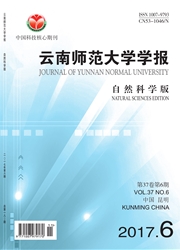

 中文摘要:
中文摘要:
针对三七免耕连作栽培系统根腐病害的发生机制问题,研究了不同间隔年限土壤三七根腐发病率及连作障碍土壤三七根腐病害与土壤酶活性的关联性.结果显示:三七根腐发病率随着三七种植间隔年限延长而降低,三七根腐发病率与间隔年限长短成正相关(R2=0.944 9);总体趋势表现出正常株根区土壤中纤维素酶、蔗糖酶、脱氢酶、磷酸酶及脲酶活性均高于发病株土壤,而多酚氧化酶活性则相反,其中纤维素酶、多酚氧化酶、蔗糖酶和脲酶活性在正常植株与发病植株之间的变化达到了极显著差异水平(P〈0.01),而磷酸酶活性在正常植株与发病植株之间的变化达到了显著差异水平(P〈0.05),脱氢酶活性则没有明显的差异(p〉0.05),说明土壤中的磷酸酶、脲酶、多酚氧化酶、蔗糖酶和纤维素酶与三七根腐病害的发生具有一定关联性.
 英文摘要:
英文摘要:
According to the problem of root rot occurred in the notoginseng no-till crop cultivation system, the relevance of time interval to the incidence of notoginseng root rot, and the relevance of notoginseng root rot to the changes of enzyme activity in rhizosphere soil were studied. The result shows that incidence of notoginseng root rot has decreased along with the extended length of notoginseng planting interval,incidence of notoginseng root rot is closely relative to the fixed number of year of the interval length(R^2=0. 944 9);The activity of cellulase,sucrase,dehydrogenase, urease and phosphatase in the rhizosphere soil of healthy Panax notoginseng were higher than in the rhizosphere soil of infected Panax notoginseng, but not polyphenol oxidase. These results suggested that phosphatase,urease,polyphenol oxidase,cellulase,sucrase in the soil have the close relationship to the occurrence of notoginseng root rot. This study provided some new ideas and methods to evaluate the soil quality of notoginseng cultivation and prevent the root rot.
 同期刊论文项目
同期刊论文项目
 同项目期刊论文
同项目期刊论文
 期刊信息
期刊信息
